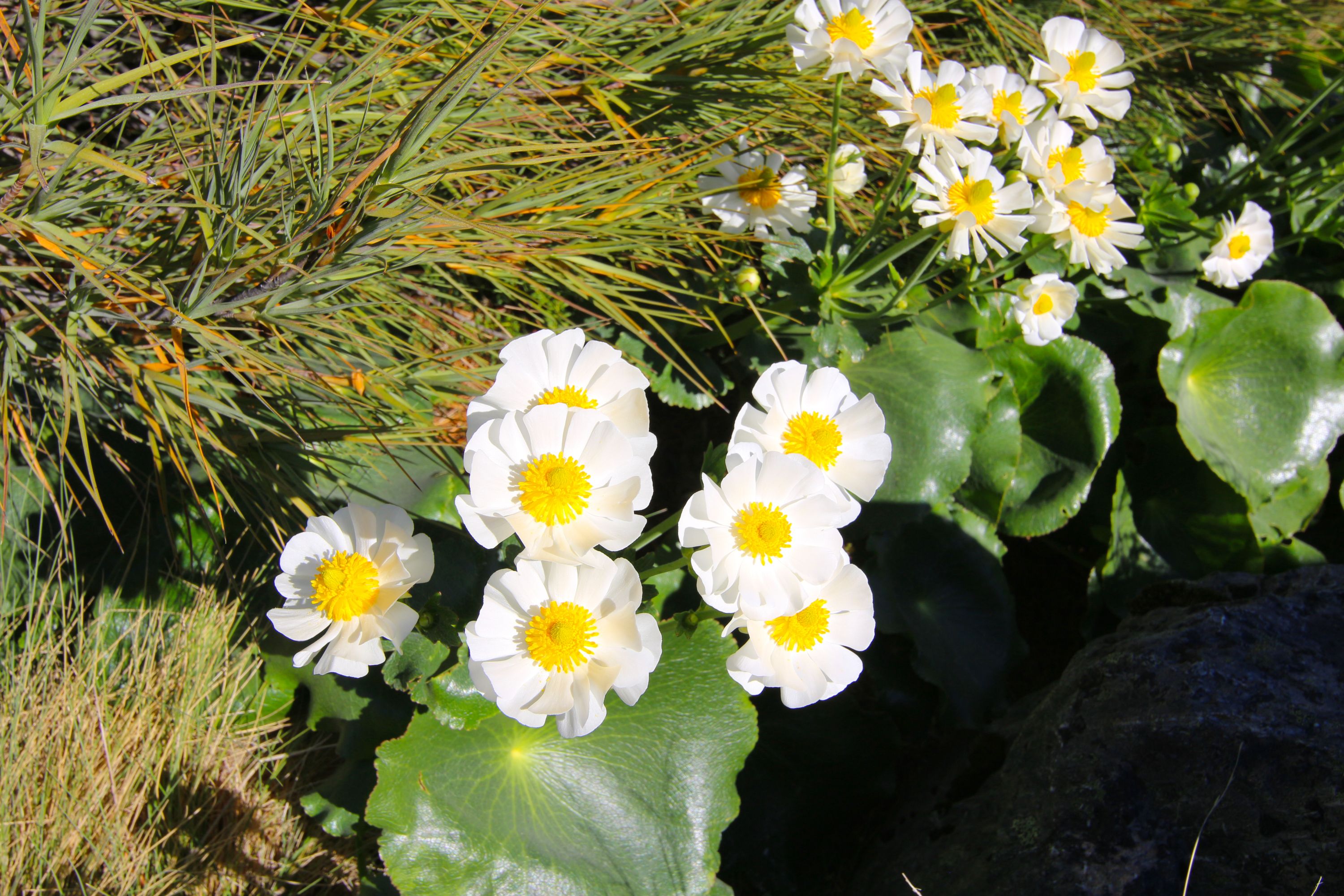Mountain buttercup
(Ranunculus lyallii)

Description
Ranunculus lyallii (Mountain buttercup, Mount Cook buttercup, or, although not a lily, Mount Cook lily), is a species of Ranunculus (buttercup), endemic to New Zealand, where it occurs in the South Island and on Stewart Island at altitudes of 700–1,500 m. R. lyallii is the largest species in the genus Ranunculus, growing over a meter in height. The species was discovered by David Lyall, (1817–1895), a noted Scottish botanist and doctor. Contemporary botanist Sir Joseph Hooker, (1817–1911), noted in his Flora Antarctica: Among his many important botanical discoveries in this survey was that of the monarch of all buttercups, the gigantic white-flowered Ranunculus lyallii, the only known species with peltate leaves, the 'water-lily' of the New Zealand shepherds.--Joseph Dalton Hooker (1895) 33 Journal of Botany, p. 209. It is a herbaceous perennial plant growing to 60–100 cm tall (the largest species of buttercup), with a stout rhizome. The leaves are glossy dark green, peltate, 15–40 cm diameter. The flowers are 5–8 cm diameter, with 10–20 white petals and numerous yellow stamens; flowering is from late spring to early summer. Notable sites for the species include Aoraki/Mount Cook National Park and in other alpine areas of including the area around Arthur's Pass. The flower (termed Mount Cook lily in this usage) was the logo of Mount Cook Airline until replaced by Air New Zealand's koru symbol. Other companies connected with the airline used the same logo until the Mount Cook Group was disbanded in 1989. The iconic flower has featured on New Zealand Post stamps as early as 1936 and repeatedly in later decades as part of sets relating to conservation and scenery. Ranunculus is a large genus of about 600 species of flowering plants in the family Ranunculaceae. Members of the genus are known as buttercups, spearworts and water crowfoots. The familiar and widespread buttercup of gardens throughout Northern Europe (and introduced elsewhere) is the creeping buttercup Ranunculus repens, which has extremely tough and tenacious roots. Two other species are also widespread, the bulbous buttercup Ranunculus bulbosus and the much taller meadow buttercup Ranunculus acris. In ornamental gardens, all three are often regarded as weeds. Buttercups usually flower in the spring, but flowers may be found throughout the summer, especially where the plants are growing as opportunistic colonizers, as in the case of garden weeds.
Taxonomic tree:







